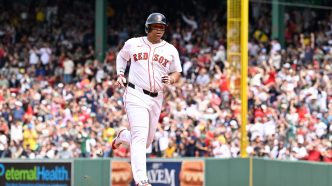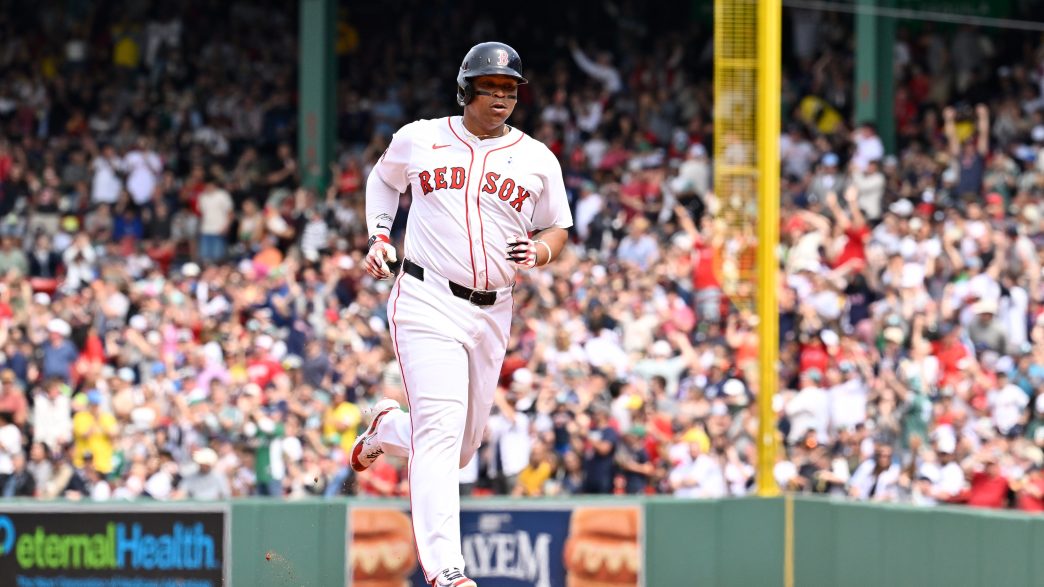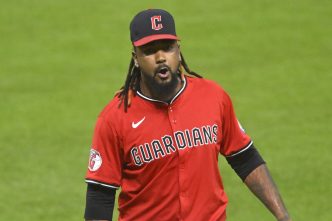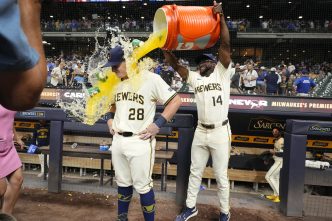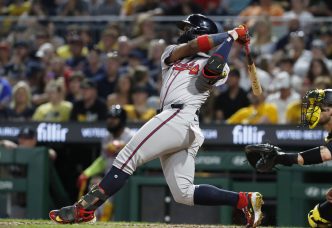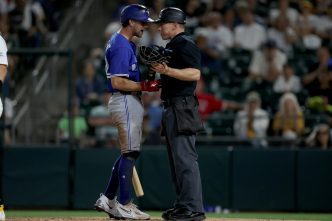The recent trade that sent Rafael Devers from the Boston Red Sox to the San Francisco Giants has sent shockwaves through the baseball world. Two years after becoming the highest-paid player in franchise history, Devers’ departure marks the end of an era and leaves the Red Sox faced with a significant transition. As the team looks to regroup, they will have a crucial series in Seattle before facing Devers this weekend at Oracle Park. Let’s break down the implications of this blockbuster deal and what questions loom large as the Red Sox move forward.
1) Who Steps Up to Fill the DH Role?
Historically, the Red Sox have relied on a designated hitter to anchor their lineup. Legends like David Ortiz and J.D. Martinez have set a high bar in this role, but with Devers out of the picture, the team now finds itself in uncharted territory. Manager Alex Cora may have to think outside the box when it comes to DH at-bats.
As the Red Sox prepare for their series in Seattle, they’ll be faced with interesting decisions. Players like Rob Refsnyder or Romy Gonzalez could see time at DH before Wilyer Abreu is activated from the injured list. Meanwhile, the return of Abreu could solve the current outfield logjam, allowing Cora to juggle players like Jarren Duran, Ceddanne Rafaela, and Abreu, depending on matchups. The overarching question—how much defensive capability are they willing to sacrifice to allow younger players like Roman Anthony and Marcelo Mayer to develop—is crucial to their strategy.
Looking ahead, the healthy return of Alex Bregman will undoubtedly shake things up again. Will Mayer shift to DH or second base, allowing the team to balance youth and experience? These considerations will play a significant role in shaping the team’s circumstances in the coming weeks.
2) How Will Cora Restructure the Lineup?
With Devers hitting second for the entirety of this season, Cora now faces a pressing challenge: reimagining his batting order. Duran seems poised to take over the leadoff position against right-handed pitchers, but who will fill the void in the two-hole? The threshold of trusting rookies like Anthony or Mayer might become necessary as they navigate through a depleted lineup.
The Red Sox’s depth has already faced strain with Triston Casas sidelined for the season and both Bregman and Abreu nursing injuries. A potential lineup could center around Duran, Abreu, and Bregman when he returns, with significant consideration going to who fills the cleanup spot based on performance. The challenge now is turning an already thin batting order into a competitive force, raising anxiety levels among the fan base.
3) What Do the New Pitchers Bring to the Table?
The addition of Jordan Hicks and Kyle Harrison is pivotal as they slot into the Red Sox pitching staff. Both pitchers have experience, with Hicks recently transitioning from a starter to a reliever, while Harrison has shown promise both in the big leagues and Triple-A.
However, their immediate availability remains uncertain. Hicks, dealing with a toe injury, could be on the mend soon, while Harrison, recently scratched from a start, might get some time to adjust in Triple-A. The rotation has been solid recently, led by Garrett Crochet and supported by promising performances from Lucas Giolito, Walker Buehler, and others. Hicks could bolster the bullpen’s depth, allowing for flexibility as Tanner Houck approaches his return. Meanwhile, Harrison’s future with the team seems geared more towards long-term development than immediate impact.
4) How Will Financial Strategy Shift Post-Devers?
From a financial perspective, the trade can dramatically alter the Red Sox’s trajectory. Parting ways with Devers has opened up over $270 million in financial flexibility going forward, allowing the front office to pivot on their spending strategy.
The Red Sox find themselves in a position where they can aggressively pursue big-name players at the upcoming trade deadline. With only limited long-term commitments aside from key players like Garrett Crochet and Trevor Story, there’s ample room to maneuver. The league is watching closely to see if the Red Sox will seize this opportunity to retool for both the present and future.
5) What’s the Future of First Base?
Currently, Abraham Toro and Romy Gonzalez are tasked with filling the first base position, a role that Devers was not likely to assume mid-season. Given Casas’ significant injury and lengthy recovery, the Red Sox must now consider their long-term options at first base—a challenge with no clear answer on the current roster.
As the team seeks a powerful bat to anchor the lineup, they should carefully assess the market for a first baseman who not only fits their needs now but can also provide stability into the future. The search for a big-name, controllable option at first base is expected to be a focal point for the Red Sox as they step into a new era post-Devers.
In summary, the Red Sox face a season-defining moment with the departure of Rafael Devers. As they reconstruct their lineup, redefine roles, work in new pitchers, explore financial opportunities, and contemplate their long-term strategy, the team is at a crossroads. With the right decisions, they can turn this challenge into a springboard for future success.

